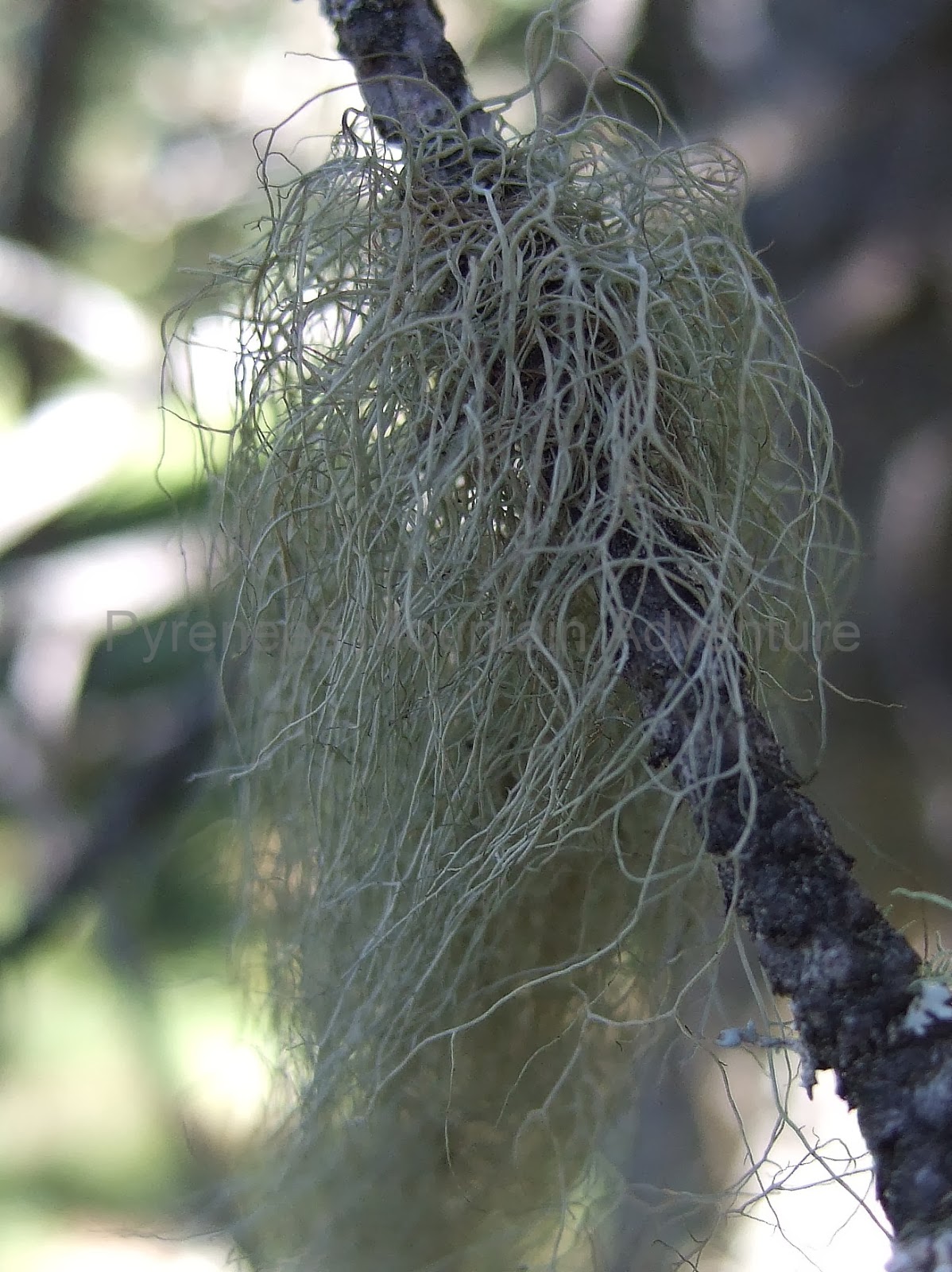As summer turns to autumn there are less and less flowers in bloom but still plants of interest to find in the mountains. In the forest, various lichens can be found. Lichen is pronounced LIE-ken and is from the Latin word lichen, a kind of plant.
A lichen is a plant composed of an algea and a fungus in a symbiotic relationship. This means a relationship where both parts are reliant on each other. The function of the algae in the relationship is to provide the food for the lichen. This is done through photosynthesis. The fungus, having no chlorophyll, cannot manufacture its own food, but can absorb food from the algae. The fungus is responsible for providing the structure to the lichen, enwraping the algea completely, providing protection from the sun and moisture.
Lichens are a food source for animals and humans, can be used to make perfume and produce dyes, and provide a source of primitive antibiotics. Lichens are also used in flower displays and in model railway landscapes to represent trees and shrubs.
On a recent walk in the Planès valley, I found several lichens in the forest.
Pixie Cups (Cladonia fimbriata).
 |
| Pixie Cups (Cladonia fimbriata) |
The cup is where the spore-like soredia reside. The lichen need the spore-like soredia to be scattered for the lichen to grow. The next generation of Pixie Cups will not grow until the soredia connect with the host algae, Pleurococcus on the ground near the site. When they enter the symbiotic relationship, the Pixie Cup will grow again in the new location.The soredia are dispersed by raindrops landing in the cup or by the action of the wind blowing in the cup and creating a vortex.
It is said that Pixie Cups were valued by the Eskimos who used them as wicks in their blubber oil lamps. The lichens would be floated in the oil and then lit.
Old Man's Beard (Usnea filipendula)
 |
| Old Man's Beard (Usnea filipendula) |
Old Man's Beard is sensitive to air pollution especially sulphur dioxide. It contains Usnic acid which is a potent antibiotic. This combined with the hairlike structure resulted in the use of this lichen to treat surface wounds. It is also high in Vitamin C. The lichen does not feed on the tree and causes no harm. The tree is just a host.
Tree Moss (Pseudevernia furfuracea)
 |
| Tree Moss (Pseudevernia furfuracea) |
Tree Moss grows on the bark of furs and pines. It is used in the perfume industry and has been found inside Egyption mummies. The lichen does not feed on the tree and causes no harm. The tree is just a host.
For more information about lichen, see the British Lichen Society or British Lichens.
'The clearest way into the universe is through a forest wilderness'
John Muir